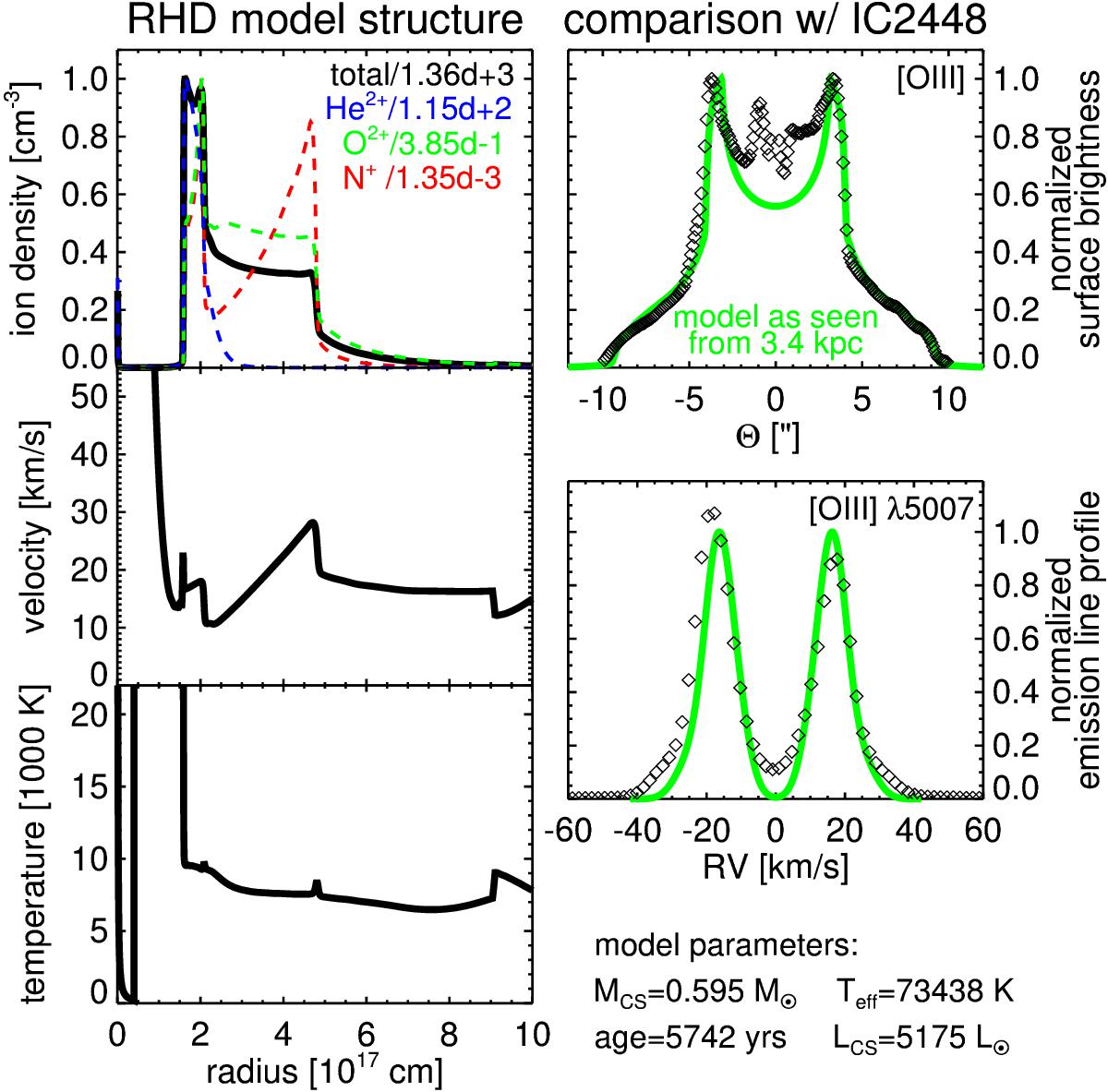Fig. 2

Snapshot of a hydrodynamical PN model (left column) and comparison with observable quantities like [O iii] λ 5007 Å surface brightness (top right) along the minor axis and central line profile (bottom right) of IC 2448. Symbols are the observations, solid lines the model predictions. The model is from a sequence introduced in Steffen & Schönberner (2006, Fig. 6, right panel which utilizes the “revised” wind model of Pauldrach et al. (2004). The parameters of the model are given in the legend. The PN model proper extends from 1.5 × 1017 cm to 5 × 1017 cm, consisting of a high-density part, the “rim”, and a low-density part, the “shell”, both embracing the shock-heated “bubble” (cavity). The top left panel gives also the ion density distribution (total, He2+, O2+, N+), the middle panel: the radial velocity field, and the bottom panel: the electron temperature. The two tiny temperature spikes indicat the leading shocks of rim and shell, respectively. The shell engulfs halo matter (former AGB wind) where the history of the final AGB evolution is stored, and the rim engulfs the slower upstream matter of the shell. The weak appearance of the shell as seen in the surface brightness and line profile reflects the density difference between rim and shell, although most of the nebular mass (up to about 80%) resides within the shell.
Current usage metrics show cumulative count of Article Views (full-text article views including HTML views, PDF and ePub downloads, according to the available data) and Abstracts Views on Vision4Press platform.
Data correspond to usage on the plateform after 2015. The current usage metrics is available 48-96 hours after online publication and is updated daily on week days.
Initial download of the metrics may take a while.


